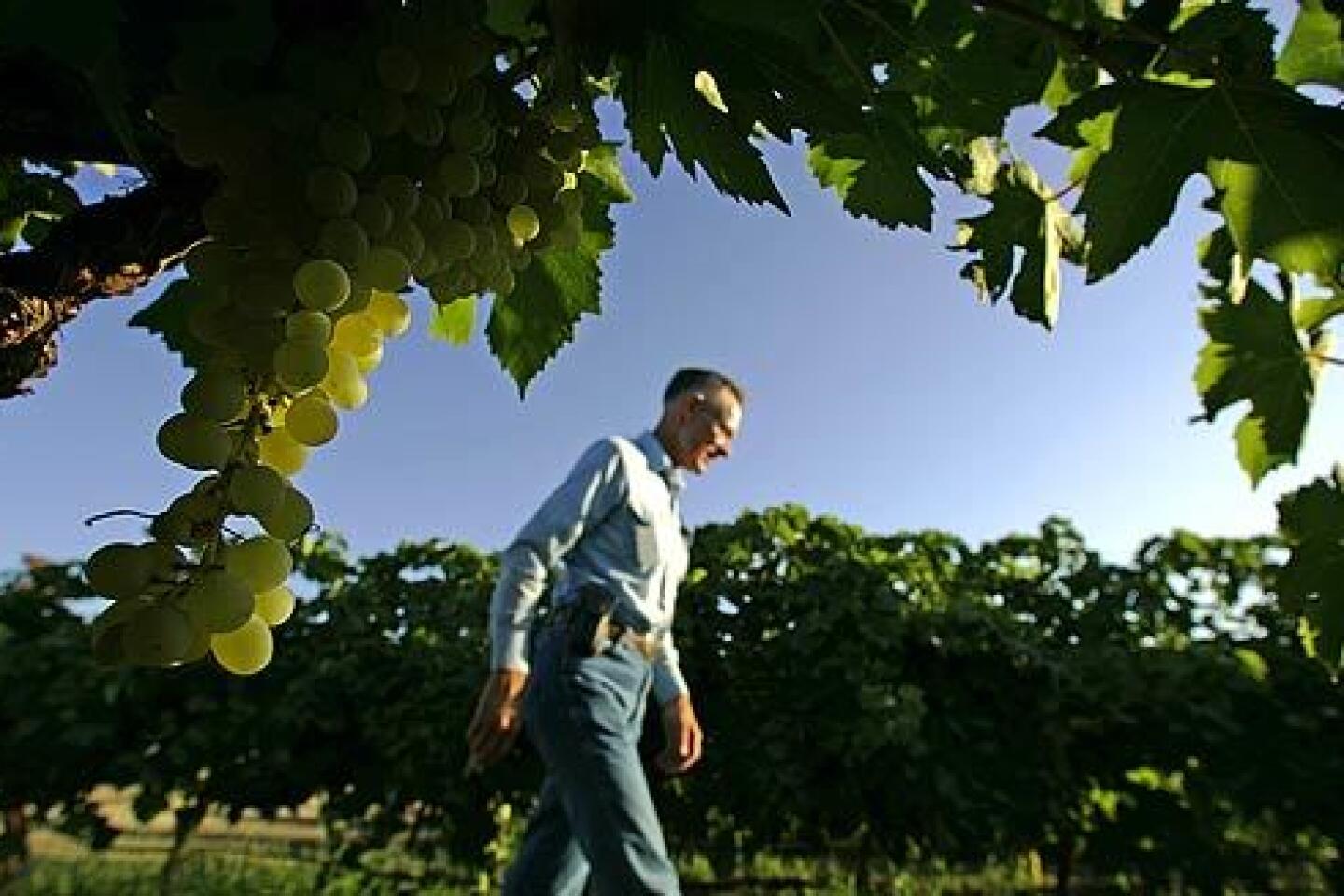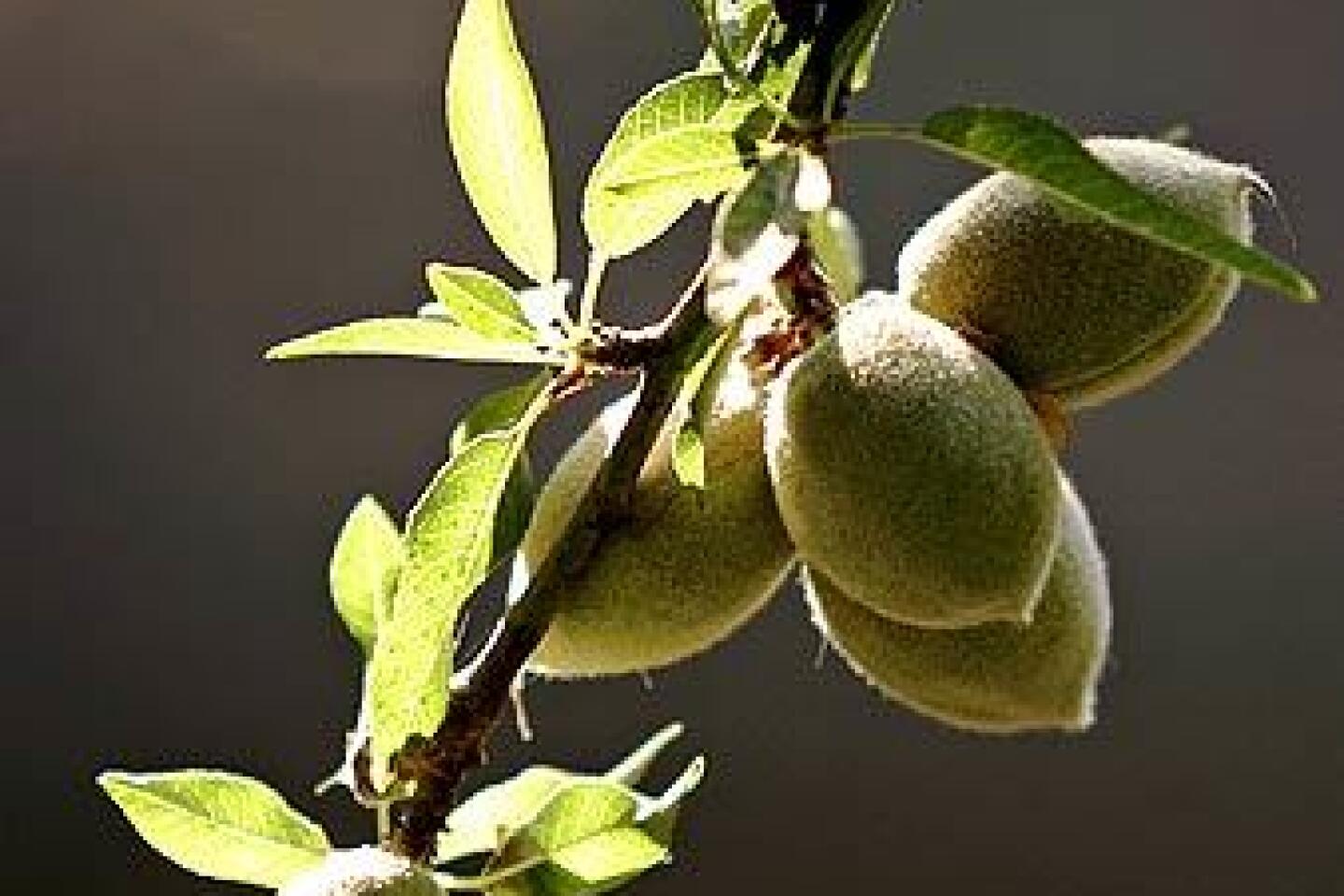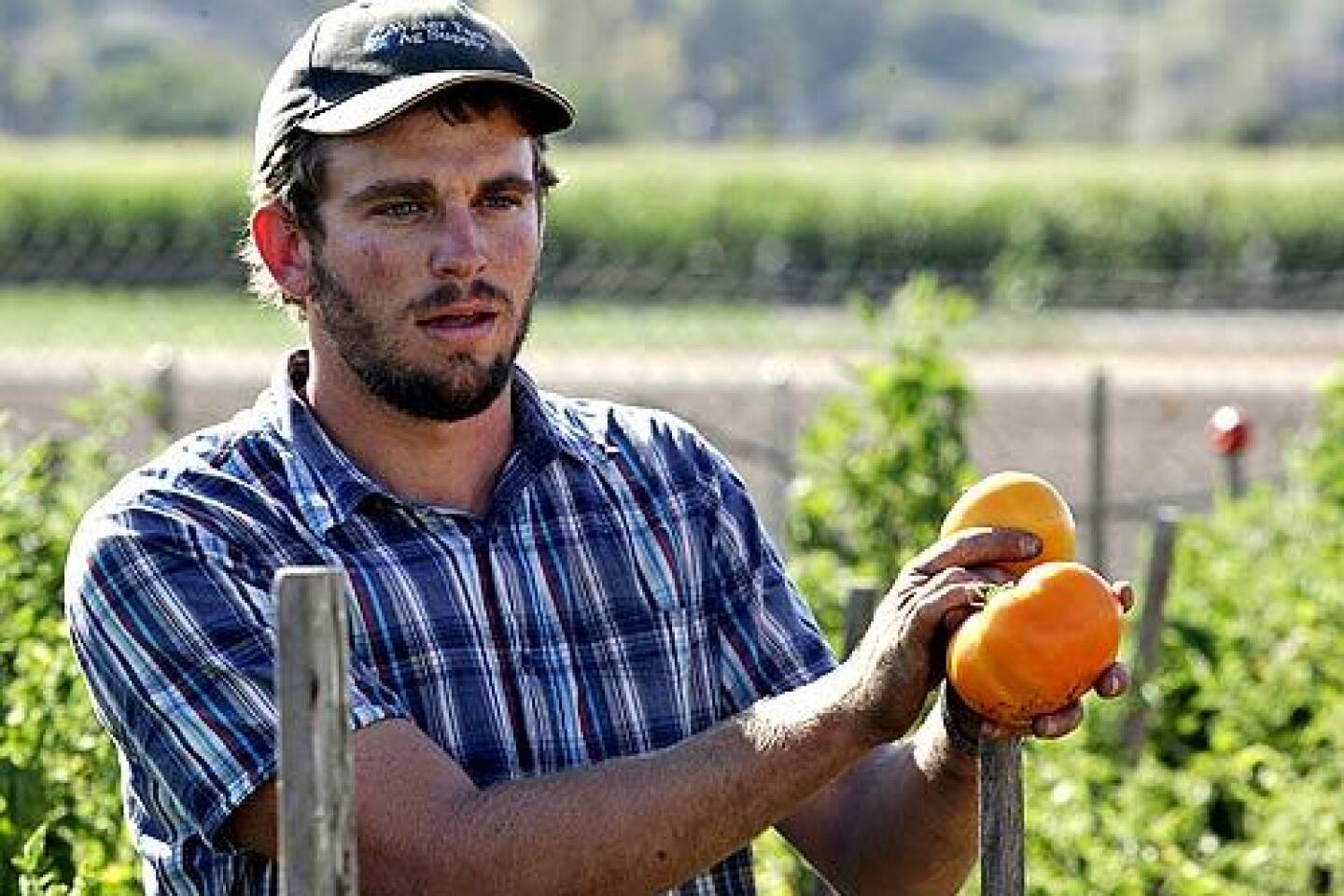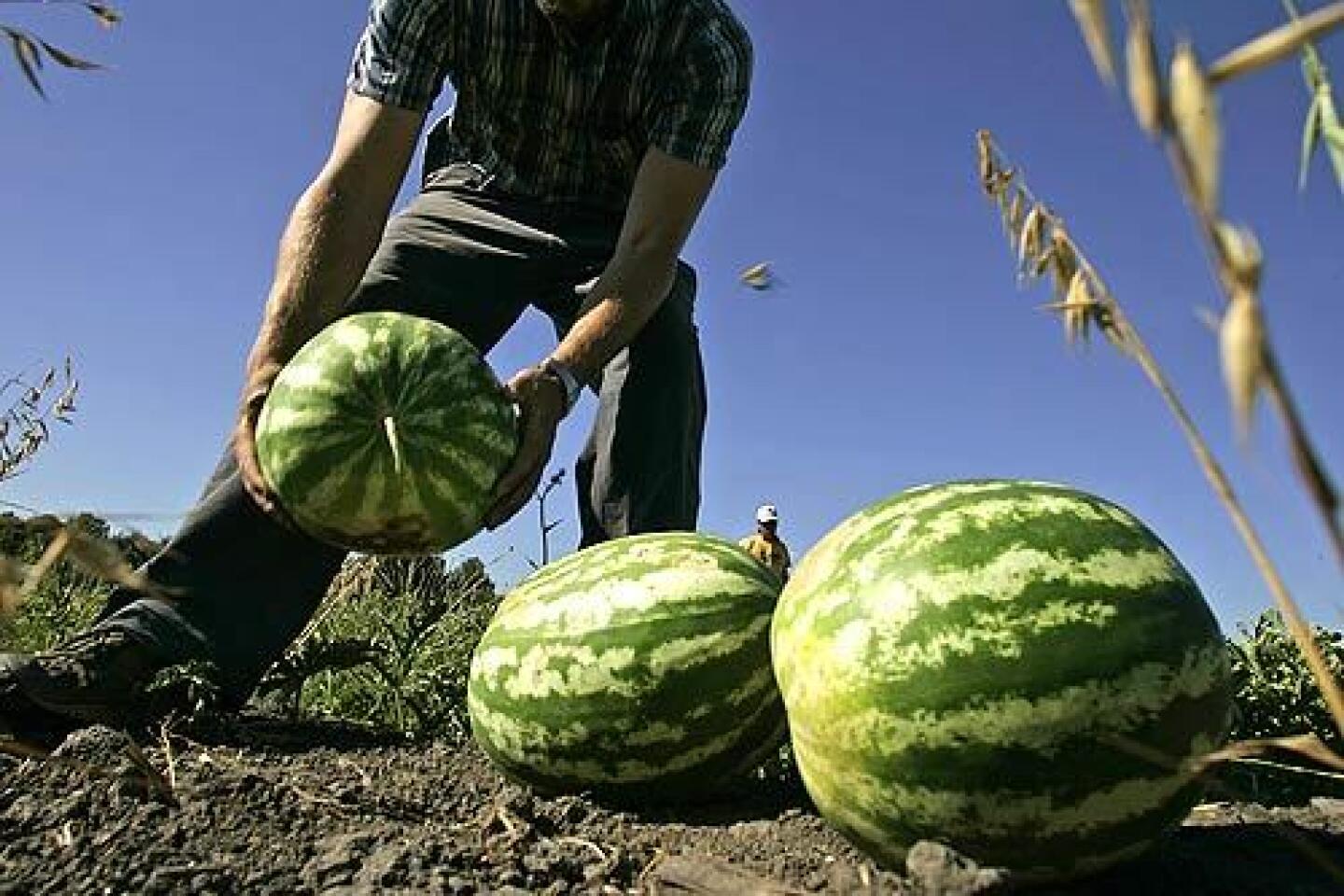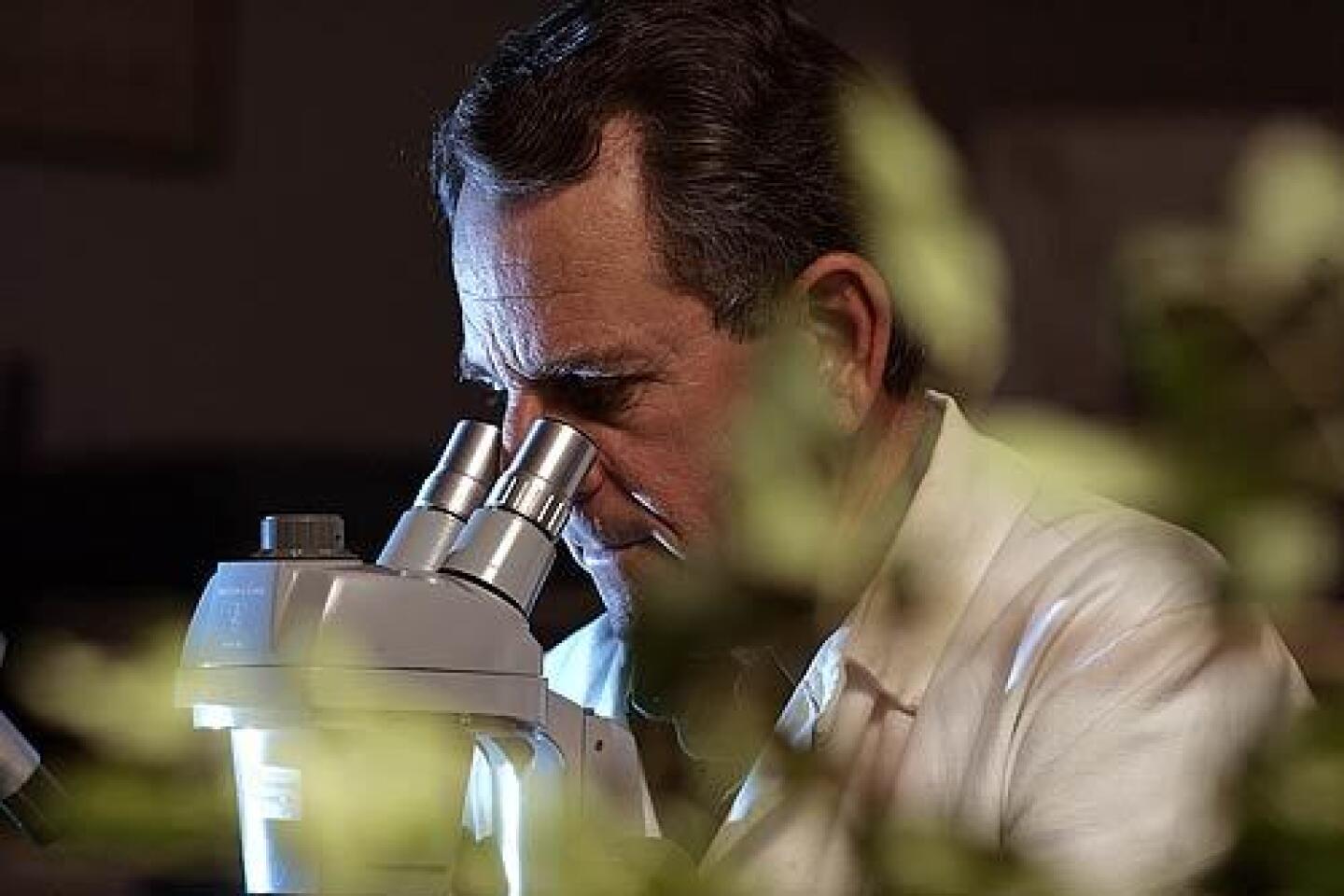Agriculture schools sprucing up their image
Fight Heavily Armed Villains. Invent New Snacks. Save the Planet.
Agriculture schools in California and throughout the nation are hoping fresh slogans will cultivate interest among high school graduates who don’t know wheat from Wheaties.
The same universities that a generation ago churned out legions of agriculture professionals today largely struggle to woo students. And many students who are studying agriculture are clamoring for cheese class and wine-making seminars, shunning traditional fields such as soil science and crop production. Even the Midwestern states have felt the pinch.
Many schools are wrestling with declining enrollment, as a large portion of the agricultural workforce is nearing retirement.
In California, one-third of the public and private plant doctors who monitor the health of the state’s $32-billion agriculture industry will retire in 10 years or less. One-third of the state’s county agricultural commissioners, whose inspections help keep out foreign pests like the Mediterranean fruit fly, will retire in the next five years. Yet enrollment in horticulture programs at the state’s top agriculture schools has dropped as much as 40% in the last five years.
“Behind every farmer in the field, there’s a whole line of merchants and scientists that support that farmer,” said Fred Roth, a professor of plant pathology at Cal Poly Pomona. “But we’re aging out, and there isn’t a group of people coming up to take our places.”
The looming workforce gap has industry experts and agriculture school officials hiring marketing companies to spruce up their image. It’s a tall order: How do you make farming hip?
University administrators peg the problem to agriculture’s outdated “cows and plows” public image. Urbanization of many of California’s historic farming plains has slashed the ranks of high school graduates exposed to horticulture or husbandry.
Many colleges have changed their names to broaden their appeal, de-emphasizing agriculture and tacking on terms such as “environmental sciences” or “natural resources.”
In June, Iowa State University officials broke with nearly 50 years of tradition and added “life sciences” to their agriculture school’s name -- a move designed to attract more students after enrollment dipped from 2,807 in 2001 to 2,448 in 2005.
Even the flagship organization of youth in agriculture, the Future Farmers of America, dropped the word “farmers” in 1988, preferring instead to be known as the National FFA Organization. Other universities have hired marketing firms to boost their profiles.
Purdue University in Indiana spent $60,000 in 2003 on slick mailers and recruiting visits to high schools to show prospective applicants the range of job opportunities available to agriculture majors.
At Cal Poly Pomona, a 20% decline in plant sciences majors over the last five years spurred administrators earlier this year to hire a marketing firm to give the agriculture school an image makeover.
A glossy mock-up advertisement dares students to “Get a Job as a Superhero,” fighting a fierce crop-destroying black bug, or “Delve Into DNA” to breed world-class Arabian horses.
Even U.S. Department of Agriculture boosters are reaching for catchy slogans. At local fairs, volunteers hand out bright red book covers with cows wearing sunglasses under the words “Agricultural Research is UDDERLY Awesome.”
About 47% of the agency’s workforce is over 50 years old, said Gilbert Smith, deputy assistant secretary for departmental administration at the USDA.
At a recent career night at Cal Poly Pomona, a dozen recruiters competed for the attention of about 30 students, offering jobs, internships and scholarships.
“It’s sad standing there and only having one potential job candidate in the room, when I’m looking for at least three or four people,” said Bert Lopez, a recruiter for Univar USA, a large fertilizer and pesticide distributor.
In California, entry-level county agricultural inspectors make $32,000 annually. But with at least two years of extra study, they could become certified as senior inspectors and earn $70,000, said Earl McPhail, president of the California Agricultural Commissioners and Sealers Assn.
When Patrick Dosier, 22, tells friends back home in Placentia that he’s majoring in agronomy at Cal Poly Pomona, they assume he wants to be a gardener. But Dosier plans to become a crop advisor and help growers find more efficient ways to use their water and their land.
“I think you get to enjoy plants more when you eat them,” said Dosier, who helps run the student farm at the university. “I do farmers markets too, and it’s fun to pitch people on the food.”
He likes working with his hands and being outdoors. After watching his father and grandfather’s circuit manufacturing company lose business to China, Dosier chose an industry that won’t get outsourced -- he hopes -- any time soon.
Some say the industry needs to enlist Hollywood’s help -- perhaps a crime show with detectives hot on the trail of hoof-and-mouth disease or Escherichia coli.
Others think the state’s agriculture colleges need to cooperate on television commercials like the California Milk Advisory Board’s “Happy Cows” campaign promoting California cheese.
At UC Riverside, professors try to draw in students by talking about how insects have shaped human history as disease carriers. The teachers humanize plant diseases by showing students that insects attack trees and vines in the same way salmonella harms people. Educators and agricultural experts estimate that the industry has five years to turn the tide.
Still, the work seems to draw a certain kind of soul.
Bob Gaddie, a 62-year-old Bakersfield plant doctor, is the third generation and last of his family to work in agriculture. His grandfather owned citrus groves in Corona, and his father was a ranch foreman.
Gaddie is a consultant, hired by farmers to be their first line of defense against wily menaces like spotted spider mites, which suck the moisture out of leaves and strip a grape vine bare within weeks.
He monitors 7,000 acres of almonds, pistachios, grapes and citrus for a dozen growers. He wakes up at 4:30 a.m. six days a week and is walking in the fields as the sun rises.
On a recent Wednesday morning, Gaddie stopped his blue Ford pickup outside a grove of almond trees and ambled down a row, ducking low-hanging branches heavy with nuts. He wore jeans, a starched blue shirt with long sleeves and a pair of well-worn, dusty brown cowboy boots. He snapped a leaf off the tree and searched it for bugs with a magnifying lens that hung by a string around his neck. He repeats the same exercise 10 times in each field he visits, using an index card to track the number and kinds of bugs he sees.
Gaddie knows that the industry is headed for a rough spot. Most of his colleagues will probably retire in the next decade, and he plans to retire in two or three years, leaving farmers he works with hard-pressed to find a replacement.
“There are plenty of opportunities, but kids just are not into it,” Gaddie said. “It’s not a glitzy profession.”
More to Read
Start your day right
Sign up for Essential California for news, features and recommendations from the L.A. Times and beyond in your inbox six days a week.
You may occasionally receive promotional content from the Los Angeles Times.
